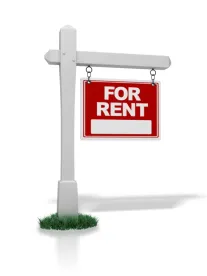Ambiguous or inconsistent lease provisions with respect to responsibility for tenant improvements can result in a quarrelsome claims process in the event of damage to the leased premises. Property owners and tenants alike should understand their respective interests in tenant improvements and responsibilities with regard to insuring them in order to ensure that a loss is appropriately covered.
What Constitutes a Tenant Improvement?
An "improvement" (also sometimes called a "betterment") is generally any beneficial change to real property – one that increases the value of the real property and goes beyond the repair or restoration of the real property to a former condition. Tenant improvements, broadly, are those improvements made to leased property that are made by or for the benefit of the tenant. Property insurance policies typically refer to tenant improvements as "permanent additions or changes made to a building by a lessee at his or her own expense that may not legally be removed."
Tenant improvements may be structural changes (e.g., adding, moving, or removing a wall), or other installations such as HVAC units, lighting fixtures, or electrical or plumbing work. These may be improvements made by the tenant during the lease term, but the lease may also identify certain improvements as "tenant improvements" that were not directly made or paid for by the tenant, such as initial work completed at the beginning of the lease term.
Who Owns the Tenant Improvement and Who is Responsible For It?
The lease should clearly define which party owns the tenant improvements during the term of the lease and upon lease termination. For example, the lease may provide that certain improvements made by the tenant during the term of the lease become the property of the landlord upon attachment, or may provide that title to those improvements passes to the landlord at the end of the lease term. It is important for the tenant to have a clear understanding of the scope of the property it owns during the lease term and the property it merely has a use interest in during the term of the lease. Knowing this distinction can assist the tenant in selecting appropriate property insurance coverage.
The parties should also pay attention to what the lease says about their respective obligations to repair or replace damaged or destroyed property within the premises in the event of a casualty, and whether or not the party has an insurable interest in that property it is responsible for. For example, in the case of an initial buildout by the landlord at the commencement of the lease term, it may not be clear whether such work qualifies as a "tenant improvement" if the tenant didn't actually pay for the work or complete it, even if the tenant is paying a higher rent premium to subsidize the cost of the initial buildout. If the lease deems items from the initial buildout that were installed by the landlord "tenant improvements" and makes the tenant responsible for their repair or replacement, but the tenant's property policy does not consider those items to be tenant improvements falling under tenant's property coverage, the tenant may be responsible for their repair or replacement.
Who is Responsible for Insuring the Tenant Improvements?
The lease should also clearly state which party is responsible for insuring the tenant improvements. The parties should consult their respective insurance policies to confirm that the language in the lease aligns with the coverage provided by the parties' property policies. If the terms of a party's policy do not cover the property that the terms of the lease deem that party's responsibility, then the insurer will deny a claim in the event of a loss. Clear and consistent lease terms guard against a situation where an improvement is not properly covered by a party's policy or, on the other hand, is arguably covered by both parties' policies, in which case both insurers may deny a claim on the grounds that it is already covered by the other policy.
When entering into a new lease or renewal, it is vital for landlords and tenants to carefully review the terms to ensure that the responsibility for insuring tenant improvements is adequately delegated between the parties and that each party's insurance coverage properly protects the scope of the tenant improvements each have agreed to assume responsibility for and insure pursuant to the terms of the lease. When reviewing, the parties should ask the following four questions:
-
Who owns the improvement?
-
Who is responsible to replace the improvement if it is damaged?
-
Which/whose insurance policy covers the improvement?
-
What does that policy say (is it adequate)?





 />i
/>i

